As the little treasures of the family, cats, in addition to daily cat food, can improve their appetite and increase their eating pleasure by feeding them some cat snacks. However, there are many kinds of cat snacks on the market, such as biscuits, liquid cat snacks, wet cat food, freeze-dried cat snacks, etc., but some cat owners may have doubts about the safety and health of commercially available snacks. Therefore, homemade cat snacks have become a choice that can ensure the freshness and safety of ingredients and can be adjusted according to the cat's taste. Let's introduce several ways to make homemade cat snacks in detail.
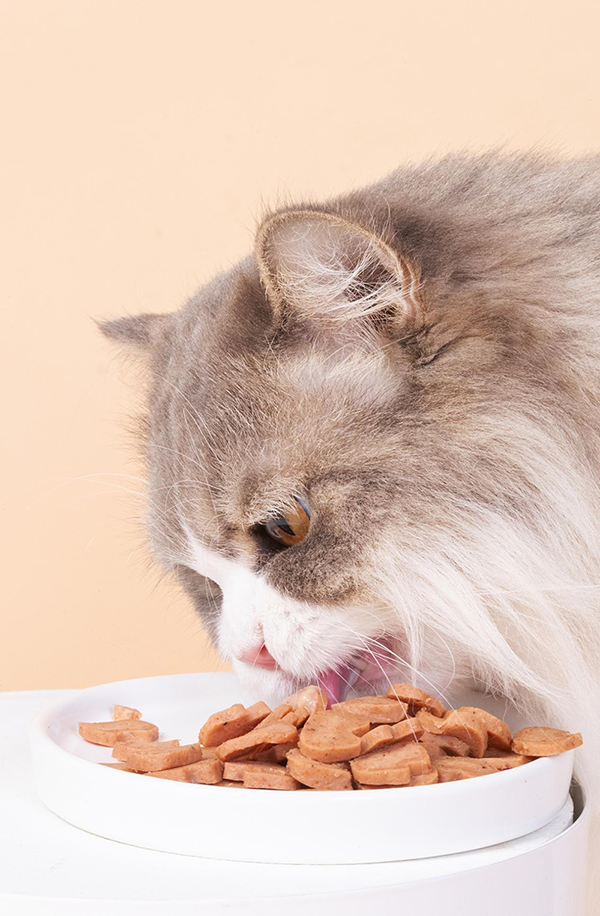
Homemade Raw Meat Cat Snacks
What is raw meat?
Raw meat is not a single kind of meat, but a food made up of a variety of meats plus some animal offal and some cartilage, specially for cats. Raw meat is rich in nutrients and can meet the cat's needs for high protein and other nutrients.
Common muscles that cats can eat:
Chicken, duck, rabbit, turkey, venison, ostrich, beef, pork, beef heart, pig heart, sheep heart, mutton, etc.
Common bones that cats can eat:
Chicken neck, duck neck, rabbit steak, chicken steak, turkey neck, quail paste, etc.
Common offal that cats can eat:
Chicken liver, duck liver, goose liver, chicken gizzard, rabbit kidney, beef loin, etc.
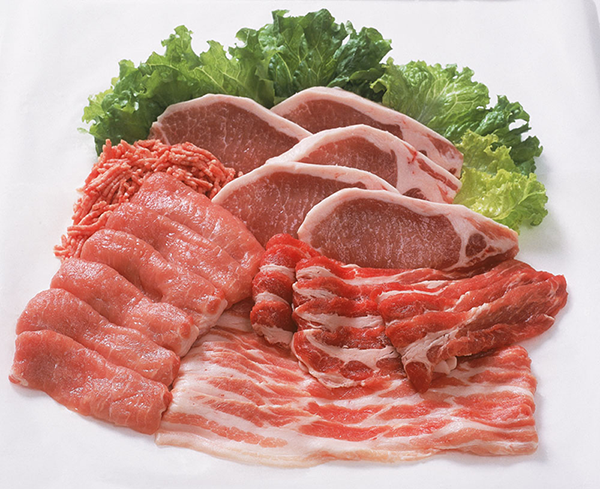
Production steps:
1. Purchase ingredients: Purchase fresh and qualified ingredients, such as venison, duck, chicken breast, beef, quail, liver, etc. In general, the ratio of raw bone to meat is: 80% muscle, 10% bone, and 10% liver.
2. Process ingredients:
1-Cut the venison into small pieces. The venison meat is tough and small pieces are easier for cats to chew.
2-Remove the skin and excess fat of the duck and cut it into small pieces to reduce the fat content
3-Cut the beef and chicken breast into dices
4-Cut the quail into small pieces, making sure there are no large bones and that the bones will not prick your hands.
3. Weighing and proportioning:
Weigh the processed ingredients according to the proportion. After weighing, add an appropriate amount of liver. The liver can be pork liver, beef liver, chicken liver, duck liver, etc.
4. Add nutrients and stir:
Add the nutrients needed by cats on a daily basis, such as vitamin E, probiotics, etc., and then stir all the ingredients evenly.
5. Freezing:
Put the processed raw meat and bones into a fresh-keeping bag, and then put it in the freezer of the refrigerator for more than 48 hours to sterilize. When feeding cats, just thaw it.
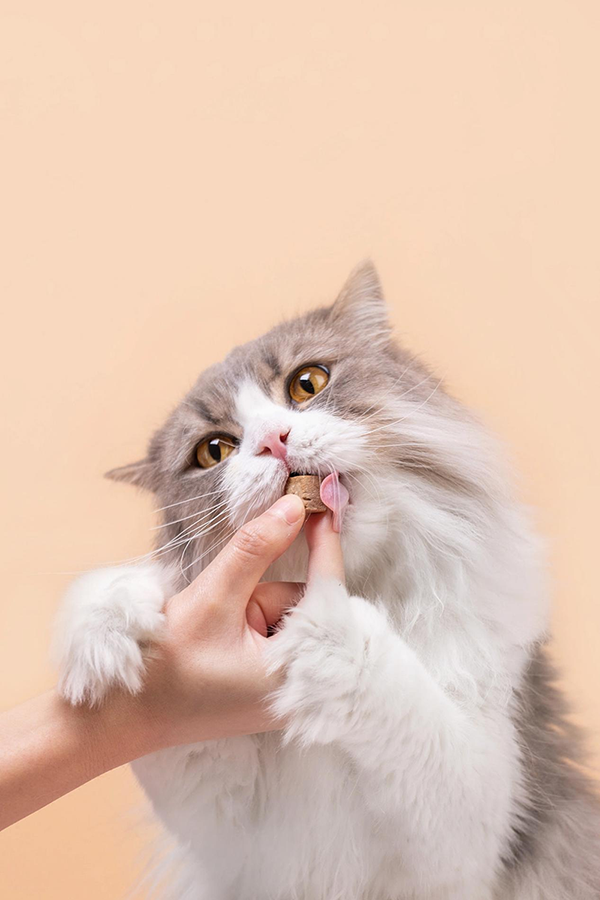
Homemade cooked cat snacks
In addition to raw meat and bones, cooked cat snacks are also a good choice. The following common homemade cooked cat snacks are simple and nutritious.
Boiled chicken breast:
Chicken breast is rich in protein and easy to digest, which is a favorite food for cats. The preparation method is simple. Put the washed chicken breast into boiling water and cook until the chicken is white and cooked. The cooked chicken breast can be gently torn into strips and fed to the cat one by one.
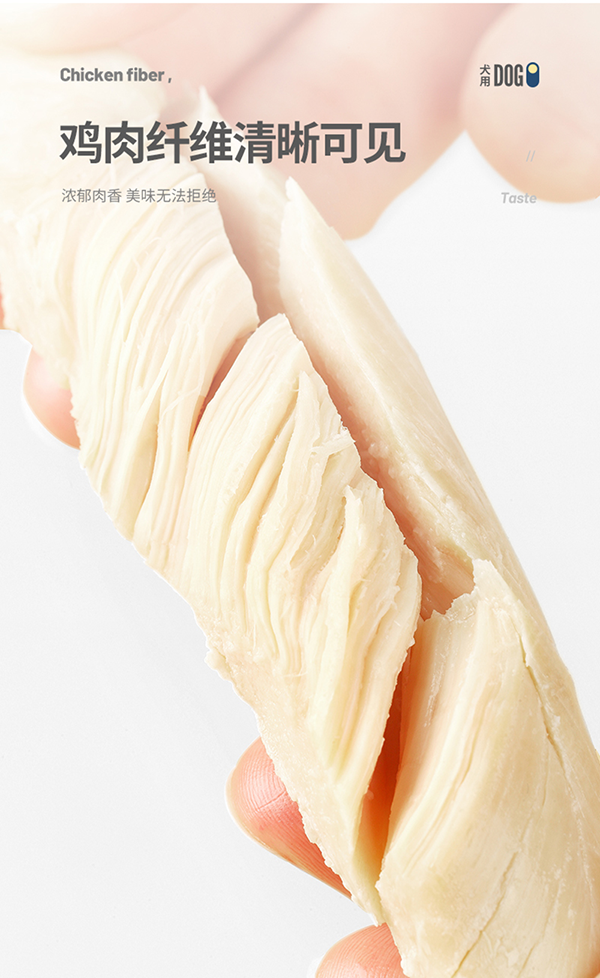
Nutritional cat meal with animal offal:
Steam animal offal such as chicken heart and duck liver with lean meat, pumpkin, carrot, etc. and feed it to cats. Prepare less than 100 grams of offal each time, with a small amount of meat and vegetables. Wash all the ingredients, cut them into small pieces, steam them in a pot, and feed them after cooling. The cat meal made in this way has both the granular texture of meat and rich nutrition.
Egg yolk fish meal:
If you want your cat's hair to be more fluffy and shiny, you can make egg yolk fish meal twice a week. You can choose deep-sea salmon or ordinary freshwater fish, remove the bones and thorns of the fish, wash and mince it, then add eggs, stir well and steam it in a pot. Cool it after steaming, and make sure there are no bones before feeding to avoid choking.
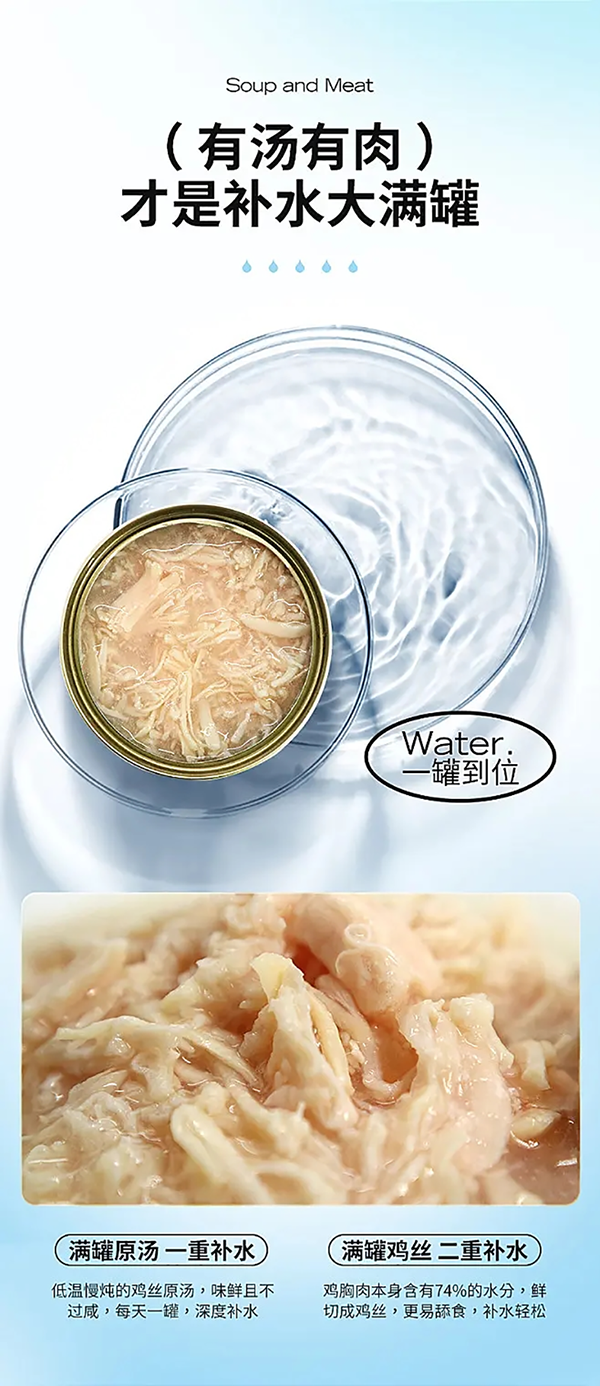
Fruit feeding for cats
Fruits contain a lot of vitamins, trace elements and minerals, which can effectively supplement the nutrients needed by cats. However, not all fruits can be eaten by cats. Before feeding, you should confirm whether the fruit is suitable for cats.
Fruits suitable for cats:
Apples (core removed), bananas, pears, watermelons (seed removed), strawberries, papayas, pineapples (peeled), peaches (core removed)
Fruits not suitable for cats:
Grapes and raisins, plums, avocados, citrus fruits (such as oranges, grapefruits, lemons, etc.)
How to feed fruits:
Feed in small pieces: When feeding fruits to cats, the core and peel should be removed and cut into small pieces to prevent cats from choking or indigestion.
Selective feeding: Some fruits are harmful to cats and may cause poisoning. For example, grapes and raisins can cause renal failure in cats and should be avoided.
Feed in moderation: Fruits should be fed in moderation. Excessive intake may cause diarrhea or other health problems in cats. Especially cats with fragile stomachs should avoid excessive fruit intake.
Feed after meals: Cats cannot eat fruit on an empty stomach, which can easily cause gastrointestinal discomfort. It is best to feed fruit to cats after they have finished their meals, and avoid eating fruit while eating to avoid indigestion.
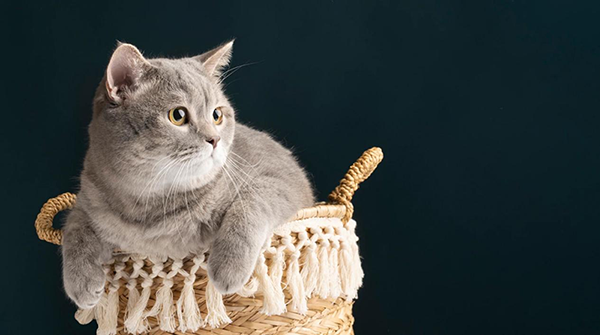
Nutritional needs and precautions for cats
As carnivores, cats' main nutritional needs include high protein, high fat, and appropriate amounts of vitamins and minerals. The following points need special attention:
High protein: Cats need a high-protein diet to maintain healthy muscles and skin. Meat is an important source of protein for cats, and the proportion of meat should be ensured when making homemade cat snacks.
Essential fatty acids: Cats need to get essential fatty acids from their diet, such as Omega-3 and Omega-6, which are very important for cats' skin, hair and overall health.
Vitamins and minerals: Although cats can get most of their essential vitamins and minerals from meat, some nutrients may require additional supplements, such as vitamin E, calcium, etc.
Avoid harmful foods: In addition to fruits, some human foods are also harmful to cats, such as chocolate, coffee, onions, garlic, etc., and should be avoided.
Homemade cat treats not only ensure the freshness and safety of the ingredients, but also can be adjusted according to the taste and nutritional needs of cats. Whether it is raw bone meat snacks or cooked cat snacks, you need to pay attention to the selection and processing methods of the ingredients. In addition, as a supplement to the cat's diet, fruits also need to be carefully selected and fed in moderation to ensure the health and safety of the cat. Through scientific and reasonable diet matching, cats can enjoy delicious food while obtaining comprehensive nutrition.
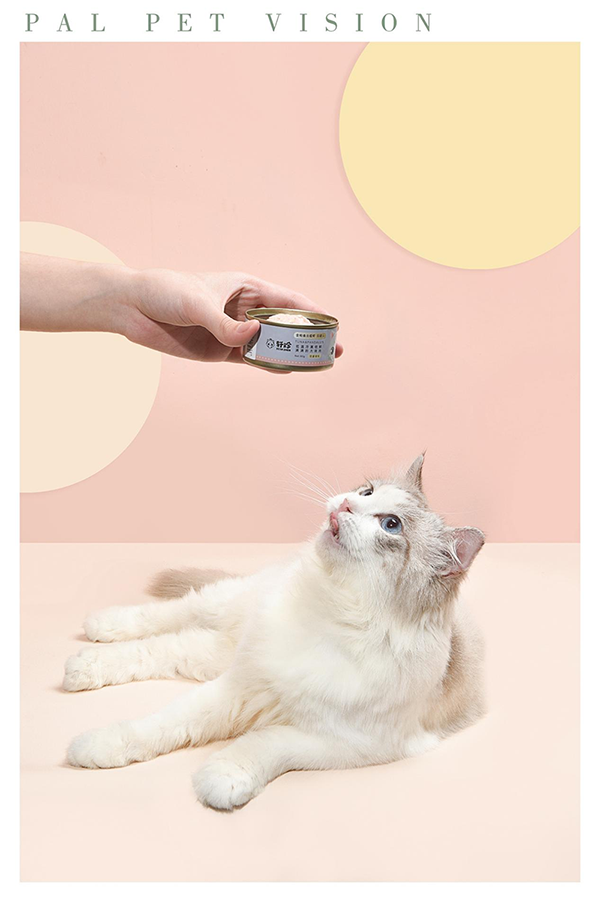
Post time: Jul-08-2024
